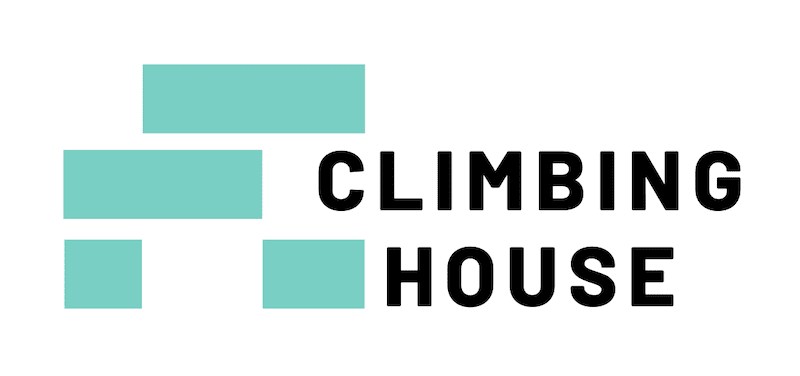Autoblock vs. Prusik: Which Knot Should You Use? (2024 Guide)
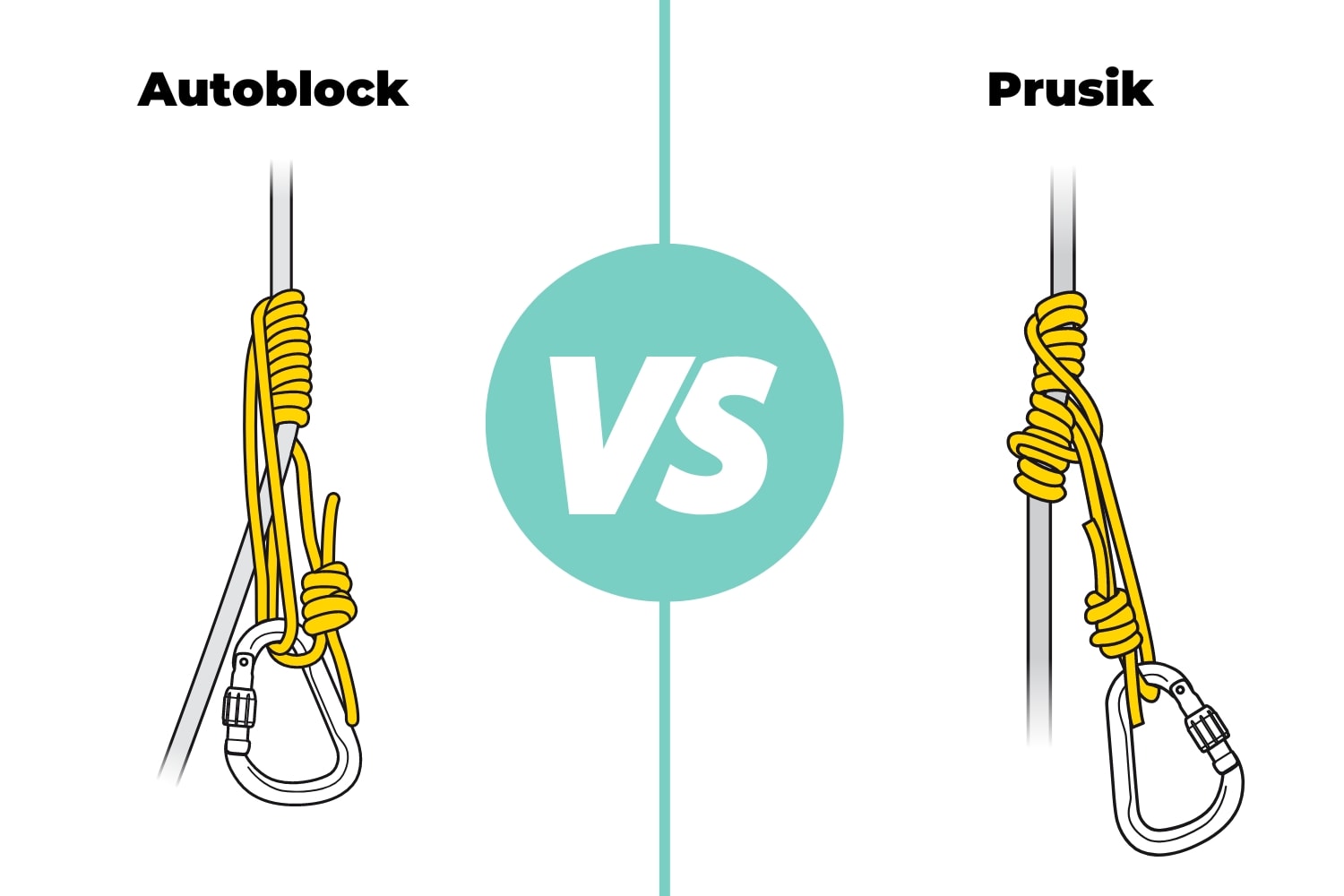
Published on: 04/29/2023
In rock climbing, friction is your friend. For example, friction helps you belay your partner and descend via rappelling with more control. In addition, via friction hitches, friction allows you to grip the climbing rope, which is super useful in various contexts like hauling and ascending.
The two most popular friction hitches in climbing are the autoblock and the prusik. In this article, I’ll explain the differences between the autoblock vs. prusik and discuss how each can make your climbing safer and more efficient.
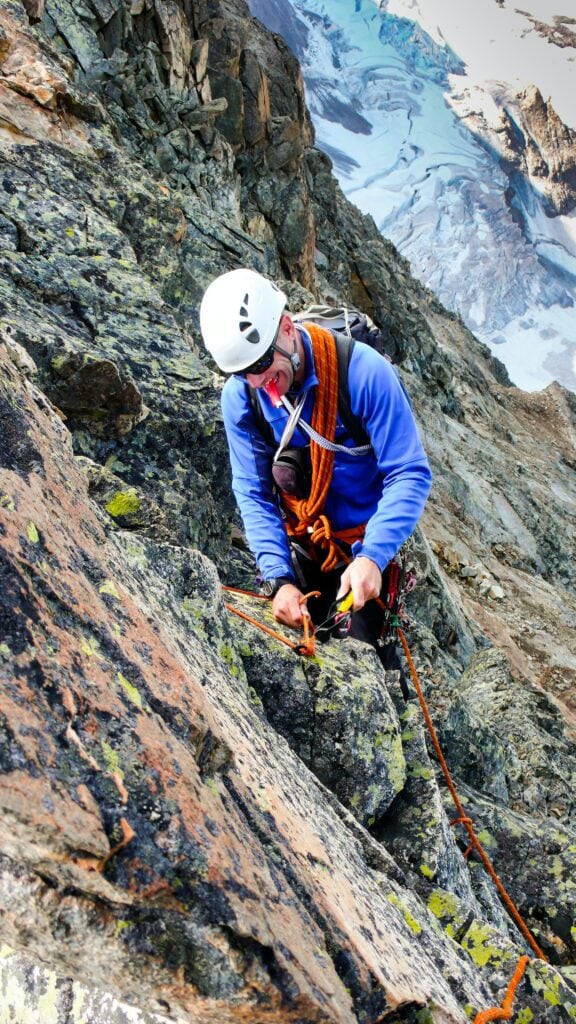
Origin of the Autoblock
French climber Serge Machard (1) invented the autoblock knot in 1961. At the time, Machard called his new invention the “spiral knot.” However, after his tragic passing in a climbing accident in 1963, the local Alpine club named the new friction hitch the Machard Knot, or the French prusik knot.
Machard used the autoblock knot for ascending ropes. However, since then, due to the advancement of mechanical ascender devices, the autoblock is primarily used to back up rappels.
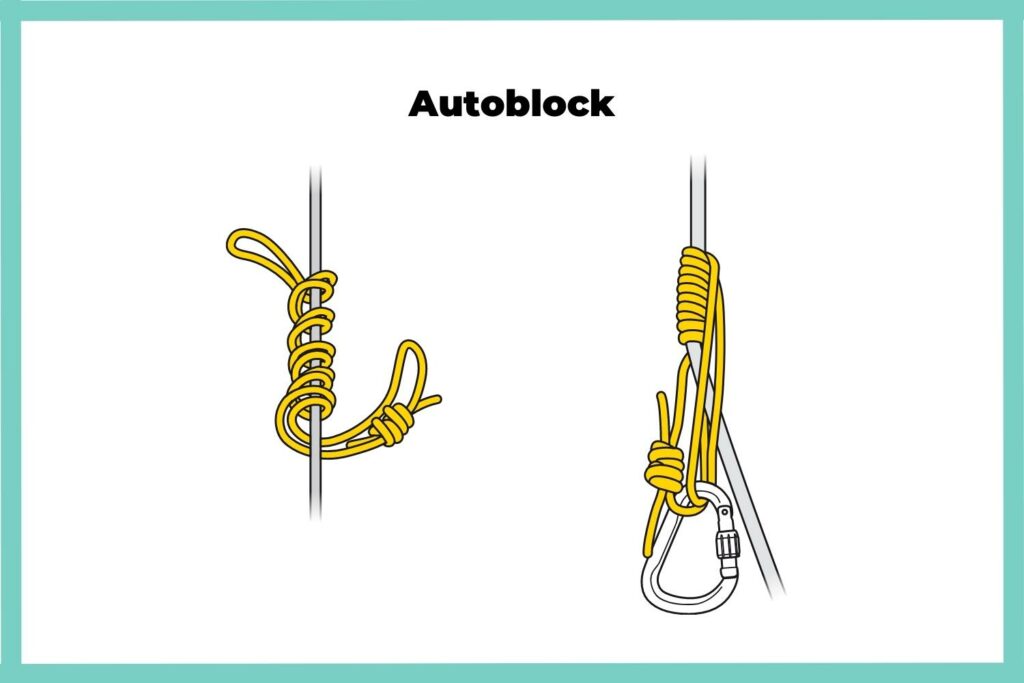
Origin of the Prusik
The prusik is named after its inventor, an Austrian mountaineer named Karl Prusik. The prusik friction hitch was first displayed and popularized in 1931 in an Austrian mountaineering manual.
At the time, the prusik was primarily used as an aid climbing tool to ascend fixed ropes (unless in emergency scenarios). However, prusiks are used less to ascend ropes and more to back up rappels and haul climbers during rescue scenarios.
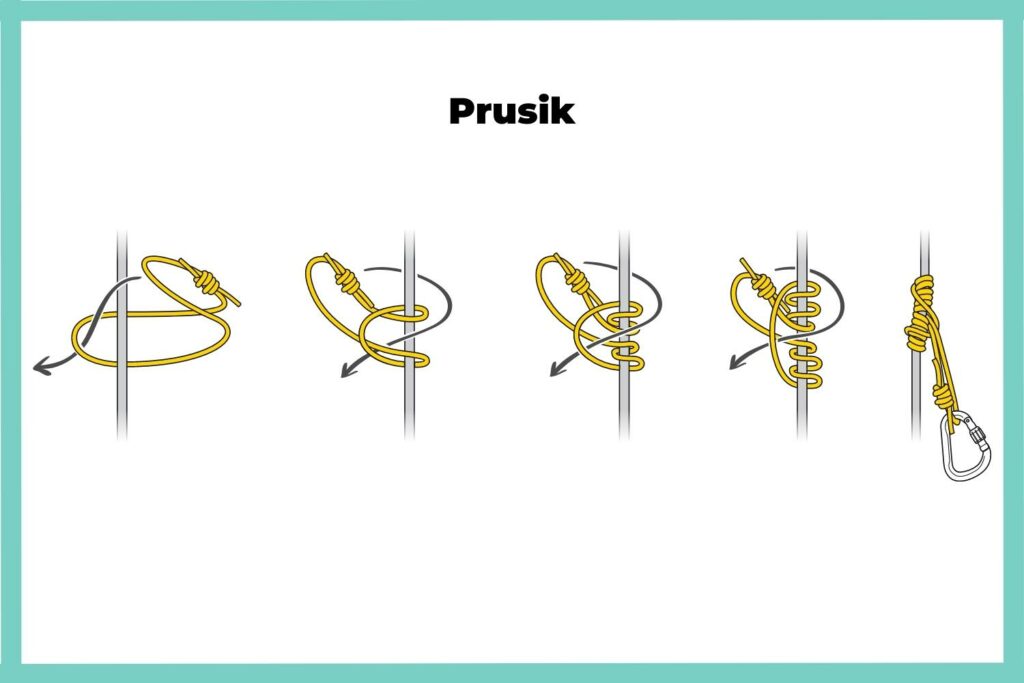
How Friction Hitches Function
Technically, the autoblock and prusik are not knots– they are friction hitches. A knot is a fastening made by tying a rope or string. Knots rely on interlocking strands or a complication in cordage to lock.
On the other hand, a friction hitch is an additional smaller-diameter cord tied onto a larger-diameter strand. The friction created by the surface contact between the hitch and the main climbing rope grips and locks it in place.
With friction hitches, more wraps equal more friction. When you tie the hitch around the rope and pull it in one direction under load, it grips and locks. Without a weighted load, you can release the hitch and smoothly slide it along the primary strand or strands.
Useful Applications for Friction Hitches in Rock Climbing
There are many different ways to use friction hitches. You can even apply them in non-climbing related contexts, such as rigging a tarp shelter for camping or securing a load in the back of a truck.
However, the autoblock and prusik knots are most commonly used for ascending ropes, backing up rappels, and hauling loads.
Ascending a Fixed Rope
In the early days of rock climbing, almost everyone was aid climbing. And because mechanical ascender devices like jumars didn’t exist yet, climbers used friction hitches to climb ropes.
For example, the prusik and the autoblock were first invented for ascending ropes.
Nowadays, modern aid climbers use jumars to ascend fixed ropes, and friction hitches are used more in an emergency or improvised context where ascending the rope has become necessary, for example, when your ropes get stuck on a multi-pitch rappel descent.
Backing up a Rappel
The most common application for friction hitches like the standard prusik or the French prusik in rock climbing is as a backup for rappels, also known as a third hand.
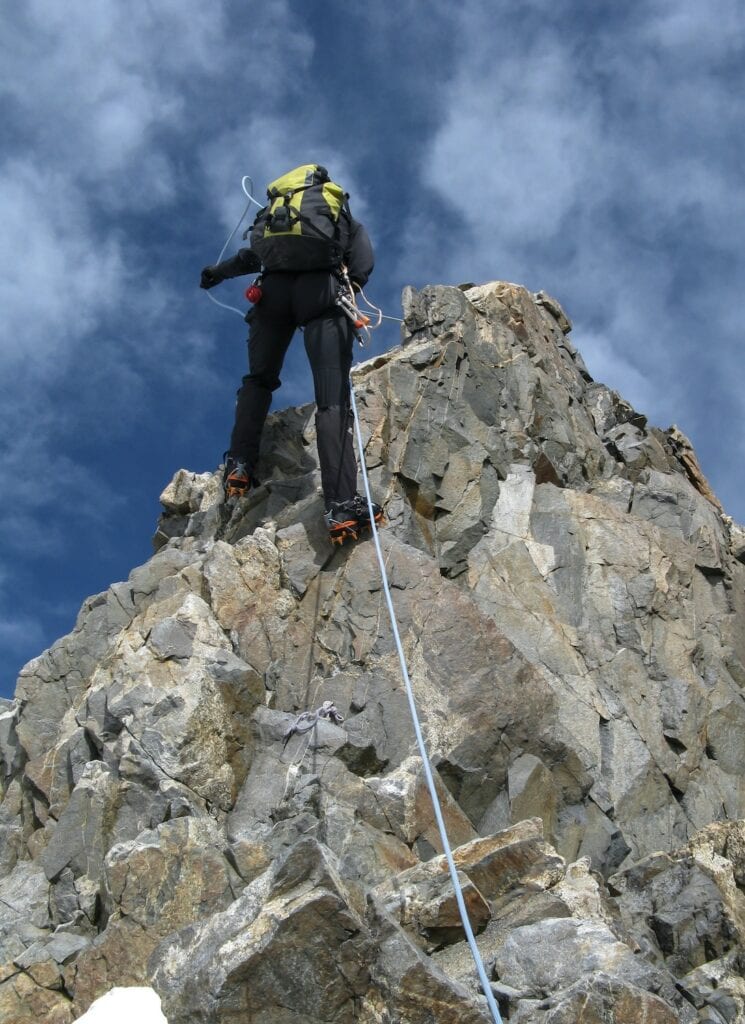
When properly tied, a third hand will grip your rappel strands and lock your rappel device. This allows you to let go of the strands if necessary, for example, when cleaning gear on a trad climb.
The backup also protects you in case an accident occurs while rappelling and you are forced to let go or lose consciousness, for example, from a rock fall event.
Hauling an Injured or Stuck Climber
The prusik knot and autoblock block are also commonly applied to haul injured or stuck climbers in rescue scenarios.
Most commonly, friction hitches function as a rope grab that you combine with a progress capture (which can also be a friction hitch) to create a hauling system.
The hauling system uses friction hitches to harness the power of mechanical advantage for hauling a load, often the body weight of a fellow climber.

Pros and Cons of Each Knot
Autoblock
Pros
Cons
Prusik Knot
Pros
Cons
Tips for Tying The Autoblock and Prusik Knots
- If making your own, use a 6 or 7-millimeter diameter nylon cord between 120 and 160 centimeters long.
- After tying, pull on the knot to make sure the hitch works. If it slips, add another wrap.
- Whether you tie a classic prusik or an autoblock, always wrap them neatly.
- Remember, you can also tie a friction hitch with a nylon sling or piece of webbing.
- If you don’t want to tie your own, try a pre-sewn prusik cord, like the Sterling Hollowblock (see below).
- When tying an autoblock or prusik in a hauling system, using a non-locking carabiner is okay. However, for rappelling, a locking carabiner is recommended.
- When ascending ropes, never trust your life to a single friction hitch. Always have a backup.
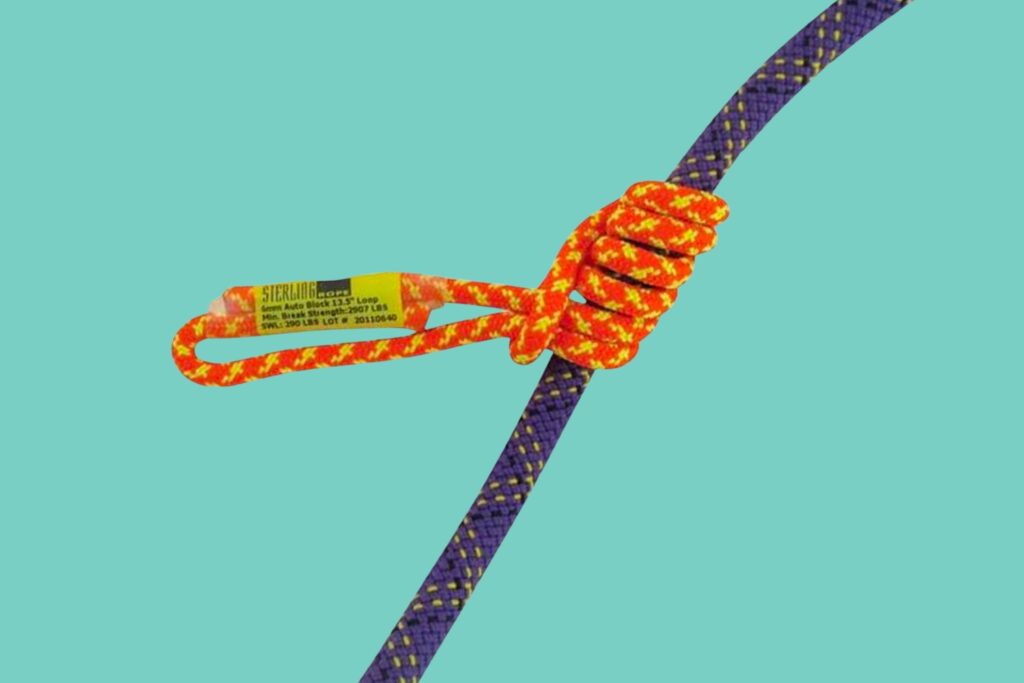
Final Thought: Apply Each in the Appropriate Contexts
Which hitch you use is typically based on personal preference. For example, I prefer the classic prusik for hauling. On the other hand, my personal preference for backing up my rappel is the autoblock.
To find out which hitch you prefer in certain scenarios, try them both to assess their differences. And remember– test them for rappelling and other applications with two feet on the ground before adding your body weight or the weight of a real climber.
Have fun, be safe, and check your knots!
Frequently Asked Questions (FAQs)
There are no specific statistics about whether the prusik or the autoblock provides more friction. However, climbers tend to use specific hitches for specific contexts more than others. Regardless of the context, remember to give it enough wraps and dress it neatly to maximize the friction your hitch provides.
Autoblocks are versatile tools that can be applied in various climbing contexts. However, I prefer to use an autoblock knot (combined with a locking carabiner) to back up my rappel device.
The prusik and klemheist are both friction hitches. One major difference is that the prusik knot is bi-directional, meaning it will grip when pulled in either direction. On the other hand, the klemheist is uni-directional, meaning it only functions when pulled in one direction.
An autoblock is used as a rope-grabbing friction hitch in rock climbing contexts. When you tie it correctly, an autoblock can back up your rappel, help you ascend ropes, or haul your climbing partner through the crux.
References
The Machard Knot
SummitPost.org (retrieved on 04/29/2023)
https://www.summitpost.org/the-machard-knot/936995
